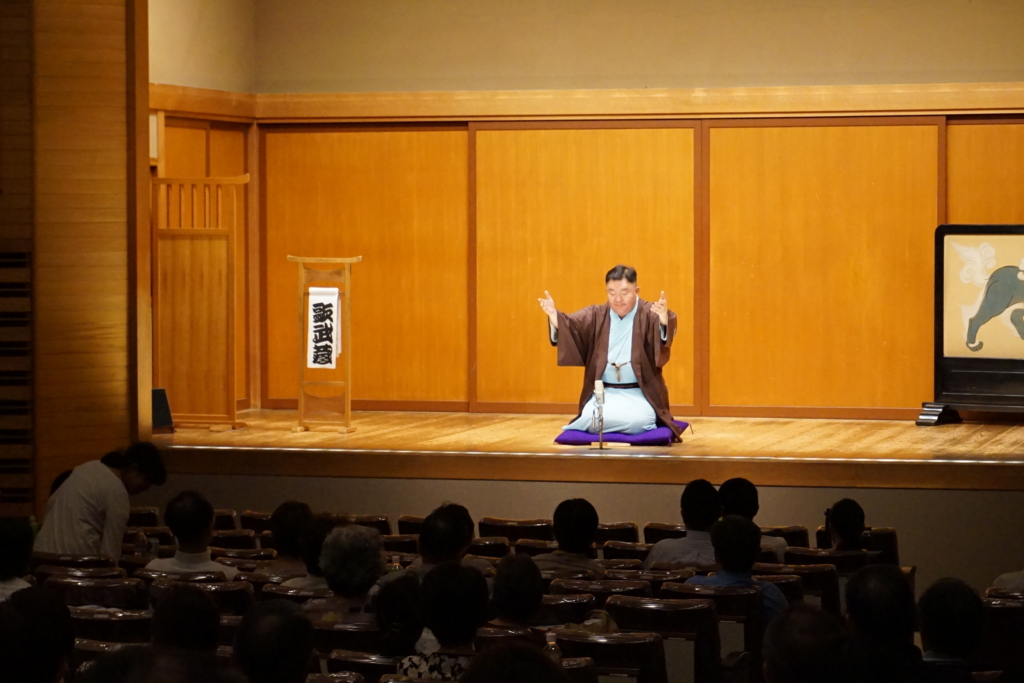The only two things needed for this art form are a fan and a tenugui(a Japanese hand towel).
There is no special sound, lighting, or art. There is only one performer. When the curtain rises, the performer appears on stage wearing a kimono and accompanied by the gentle music of taiko drums and flutes. Thinking he was sitting on a cushion, he slowly began to talk to the audience. He began with small talk and gradually moved into a story. He expresses “dialogue” by shaking his face from side to side. Eating rice with a fan as chopsticks. The tenugui is used as a book, and read.
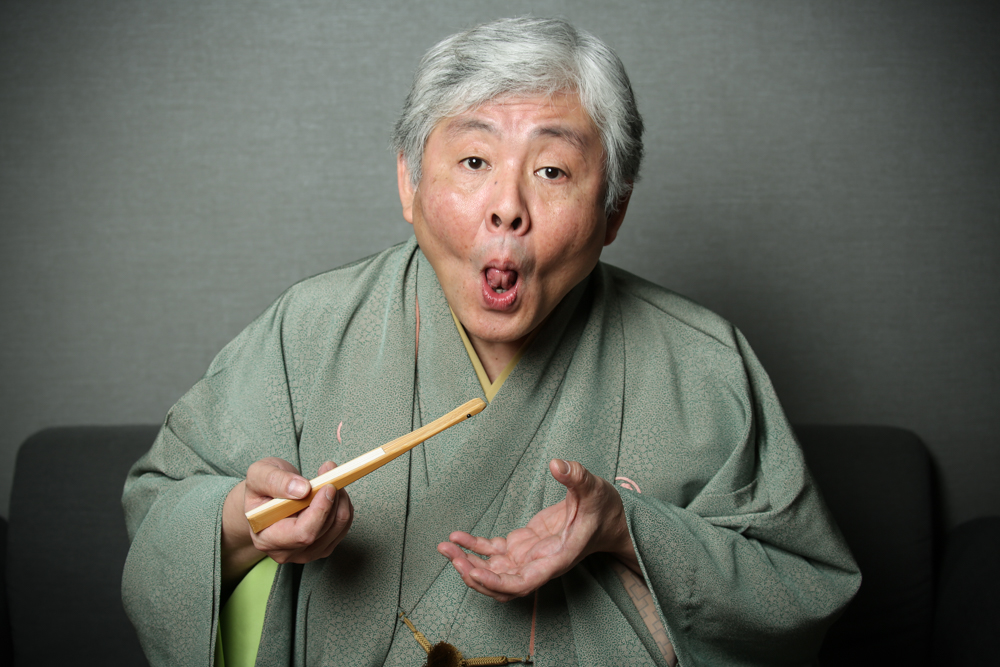
…But as I write this, I stop writing.
What in the world is “art” about this?
It doesn’t seem to be doing anything particularly difficult. Basically, it is just one performer, called a “hanashi-ka,” who is conducting a conversational drama. There is no dramatic background music at key moments. Even the props, a fan and a tenugui (hand towel), are too cheap.Just by tracing the external aspects, it is difficult to understand why this art form has remained so popular for more than 100 years.
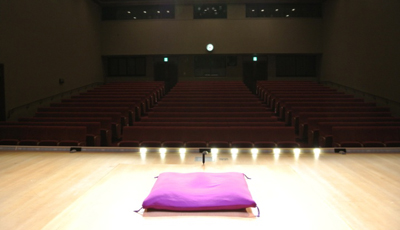
…But if you have heard rakugo, even a little, you know the depth of the art. You must have seen firsthand the acting ability of a hanashika, and the tremendous power of possession. Until a moment ago, he should have been just a dull man in a kimono, but gradually he comes to look like a bewitching prostitute. He looks more and more like a young apprentice boy. Then a world that should have been invisible rises up behind him. The scenery, smells, and sometimes even the warmth of the Edo period enveloped the audience beyond the stage.
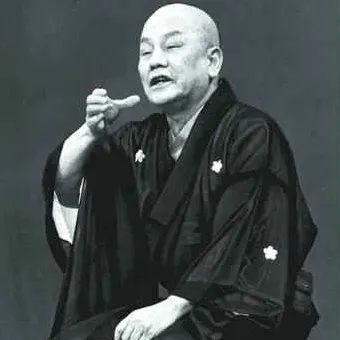
That is why this culture of “rakugo” has continued to capture the hearts of the common people for hundreds of years.And it has always been a friend of the weak.It has brought smiles to the faces of the common people at a much lower cost than Kabuki or Noh.It continues to be a major presence in the hearts and minds of the people.
In this issue, I would like to delve into rakugo, a form of comic storytelling that is a friend of the common people.
History of Rakugo
Rakugo was originally called “otoshi-banashi” referring to the comedic, one-person art of storytelling.
It began in Kyoto during the Genroku period (1688-1704), and at first, rakugo was performed by a hanashi-ka who would sit at a desk and tell a funny story, earning coins from the audience.
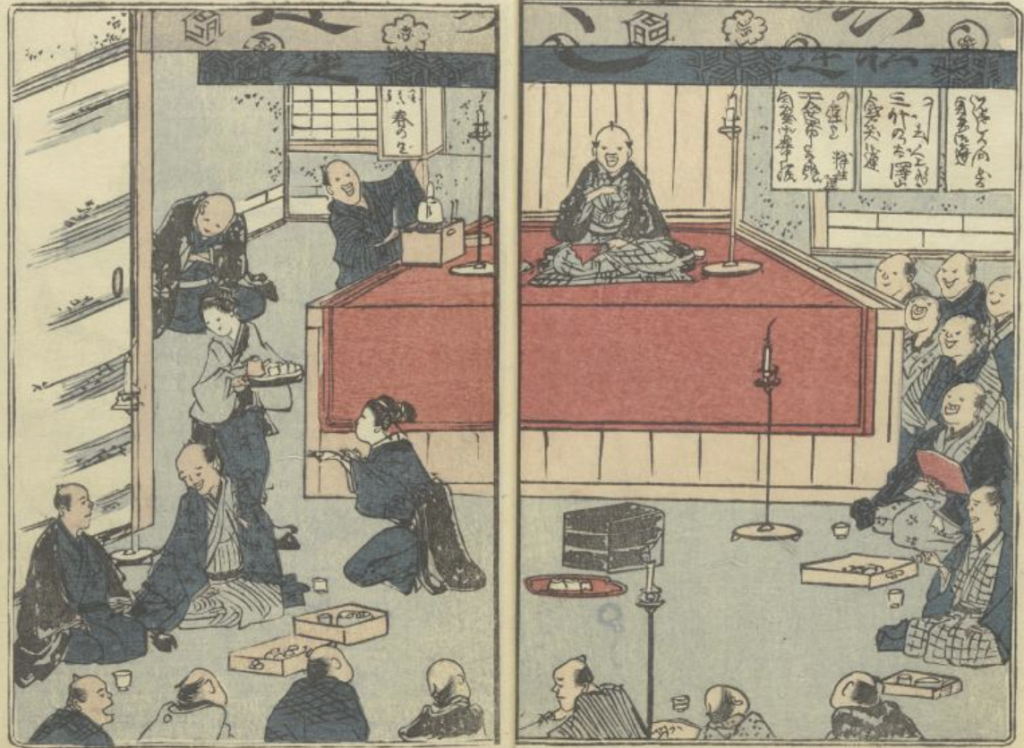
In Kamigata (Kyoto area and Kansai region) rakugo, a small desk called a “kendai” is used to make sounds by beating the desk with a small beat. This is said to be a remnant of “Tsuji banashi,” which developed as a street performance in Kyoto and Osaka. It is thought that this was done in order to stop passersby who did not come to listen to the performance, and to stand out from the bustle of the street.In addition, they are said to have used a variety of devices to create a sense of intimacy, such as speaking to listeners in the Kamigata dialect and showing charm with an exuberant spirit of service.
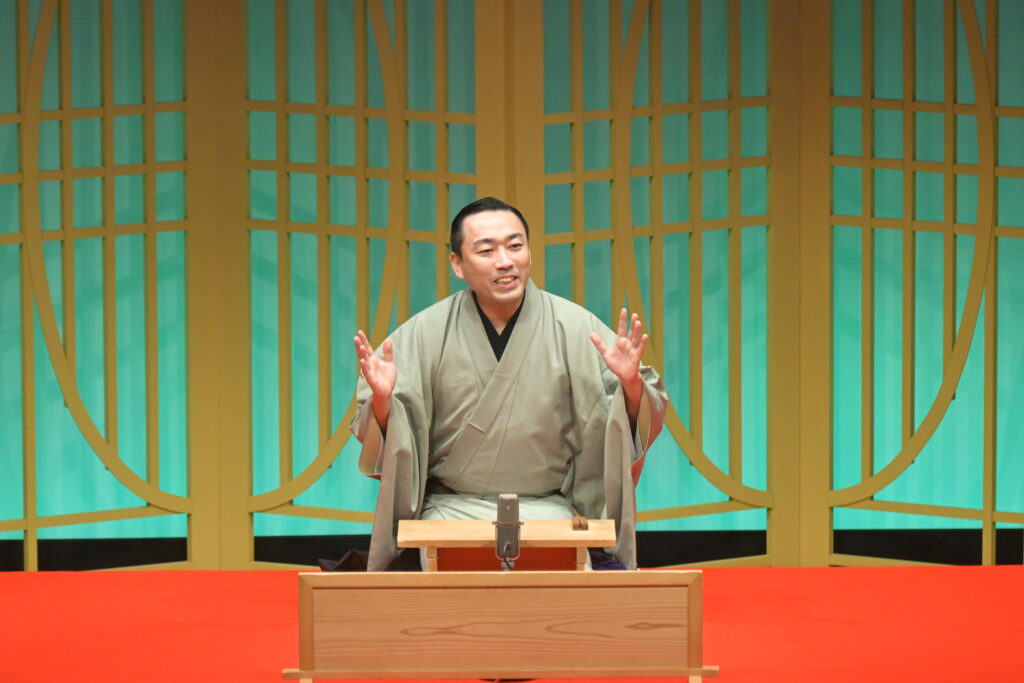
Around the same time in Edo, “zashiki banashi” (stories told in the tatami room) became popular, performed at theaters, bathhouses, drinking parties, and other such occasions at various residences.
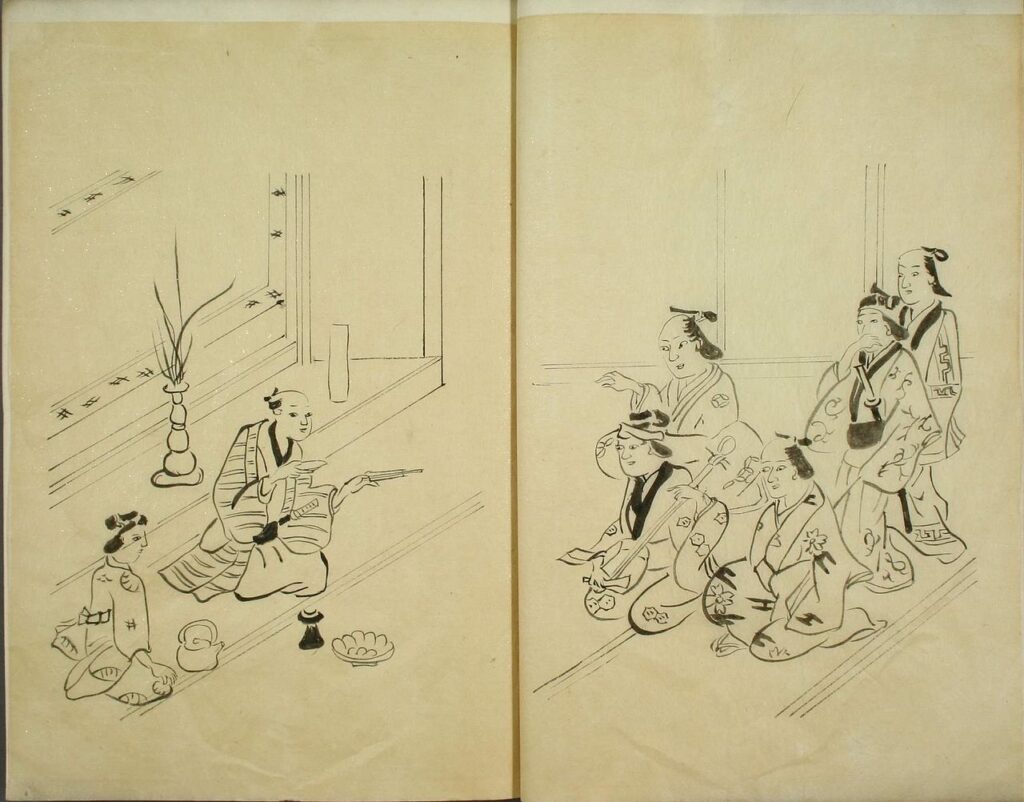
It was originally performed indoors for a small audience and was characterized by a background in which it was considered chic for the storyteller to be concise and unobtrusive to his listeners.
This time, we will mainly introduce Edo Rakugo.
Rakugo as Satire / “The Sunfish of Meguro”
Rakugo was originally intended as a way for the common people to vent. Rakugo made fun of people of high status, ranging from the town’s retired officials to the samurai, and even criticism of the shogunate, and provided laughter.
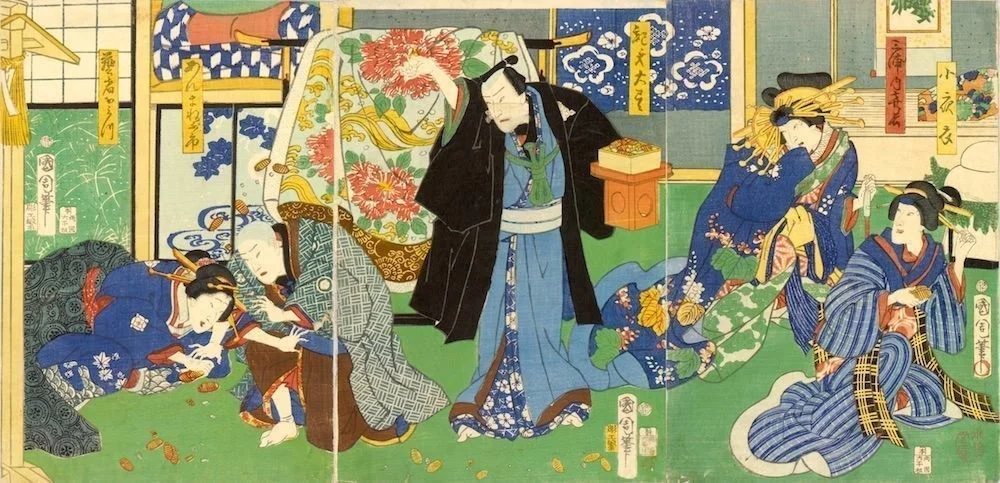
The Edo period (1603-1867), which boasted 250 years of history, was of course a time when public safety and infrastructure were far worse than in modern times. Medical care was underdeveloped, so life and death were very difficult, and with transportation systems not yet in place, there was no way to even escape from the situation. From our current perspective, they must have been under siege, but what soothed their hearts and minds must have been the satirical culture of rakugo.
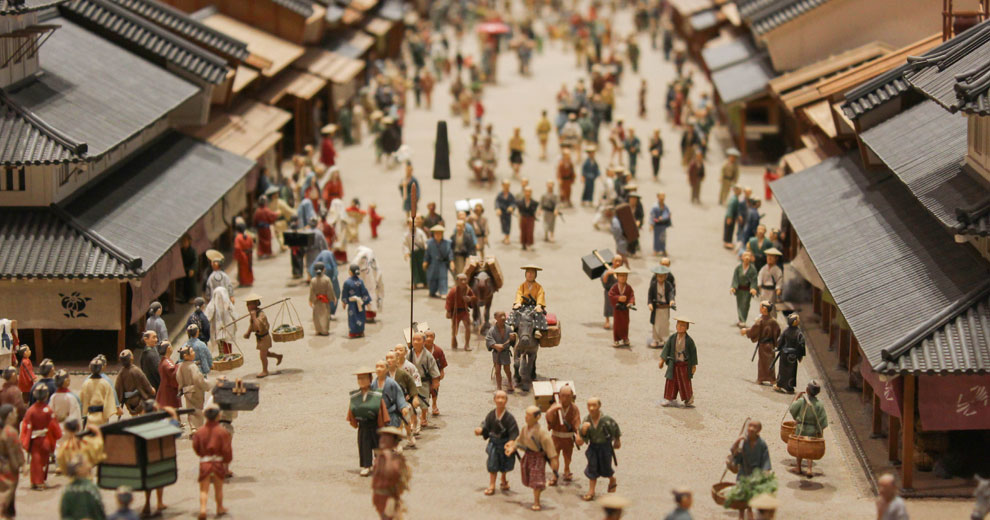
By the way, there is a famous rakugo story titled “The Pacific saury of Meguro.
A naive lord happens to eat grilled saury (a type of fish) in Meguro (an urban area in Tokyo), which has been considered a lowly dish. The lord, who usually eats only high-class food, finds it unusual and likes it very much.
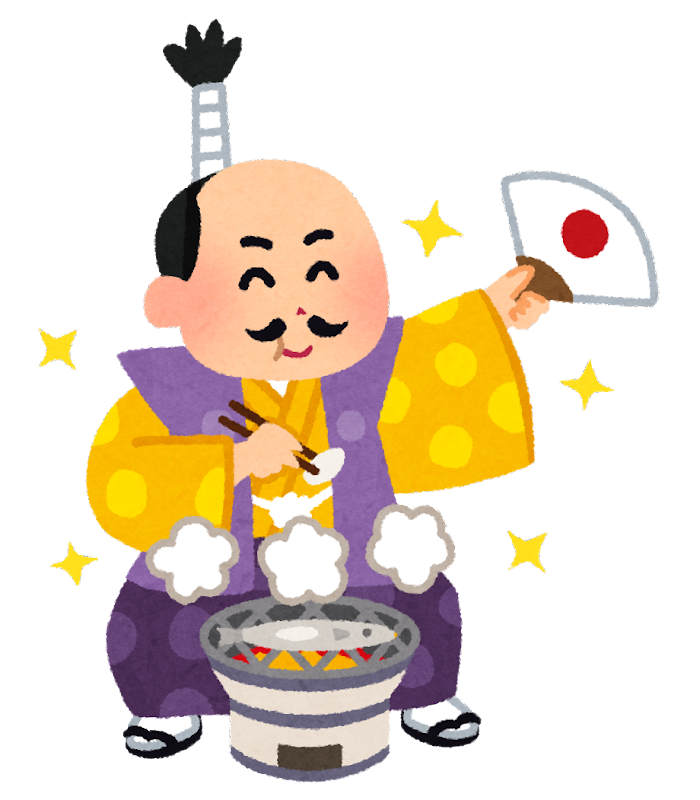
Later, Tono orders his retainers to buy saury, saying, “I want to eat that saury. However, saury has a lot of fat when it is roasted. The retainers, feeling that this would be bad for their health, remove all the fat from the saury, and also remove the bones one by one, lest the bones get stuck in the throat. But of course, the saury would fall apart in the process. Since it cannot be served that way, it is served in a bowl. The fresh saury brought in from the Nihonbashi fish market was spoiled by the vassal’s unnecessary care, and the real pleasure of the dish was spoiled, and the fish tasted even worse. The lord then grabs his retainer and asks, “Hey, where did you get this saury?”
“Yes, I got them at the Nihonbashi fish market. “
“That is not good. The saury must be from Meguro.”
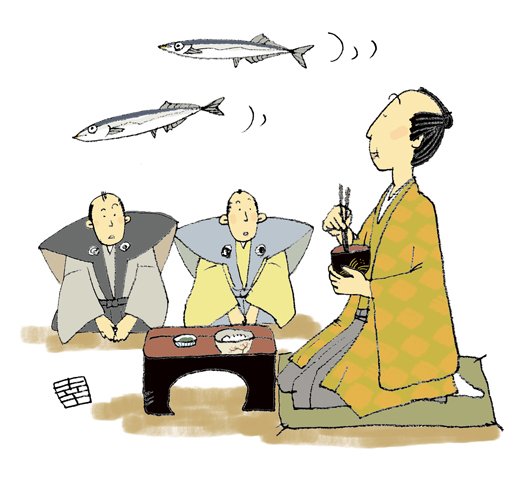
There is no way that saury, a saltwater fish, can be caught in the city. This is a famous performance that makes fun of the lord who does not even know such common sense. Such satirical plays were very popular among the common people even in those days. The age of democracy was still far away, and people did not have the means to oppose the authorities of the time. Satire played an important role in lowering the spirits of the citizens against the daily oppression. Even if you have a bad day, there is no practical solution. The healthy spirit of “let’s laugh it off,” then, has earnestly spun the history of rakugo.
The author recommends the following comical storytellers
Shintcho Kokontei (1938-2001)
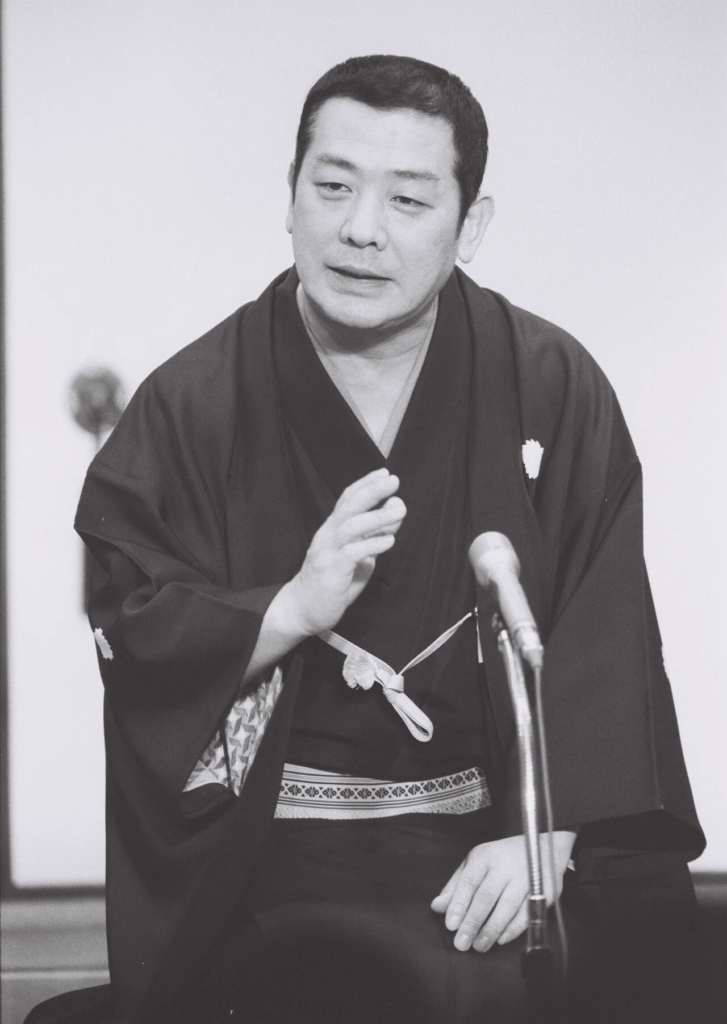
Although he has already passed away, he was called the number one rakugo performer of all time, both in name and reality. His father, Shisei Kokontei, was also a rakugo performer and one of the leading rakugo storytellers of the postwar era, but in my opinion, his son is a cut above the rest. His acting was like a chameleon, changing from a sniveling little boy to a glamorous oiran (courtesan). His dares (the sharp words he says to the other party in a fight or argument, or when he is selling something) are unmatched by any other actor, and his steady tone is like music!
The author recommends “Yanagida Katsunoshin
Shinosuke Tatekawa (1954-)
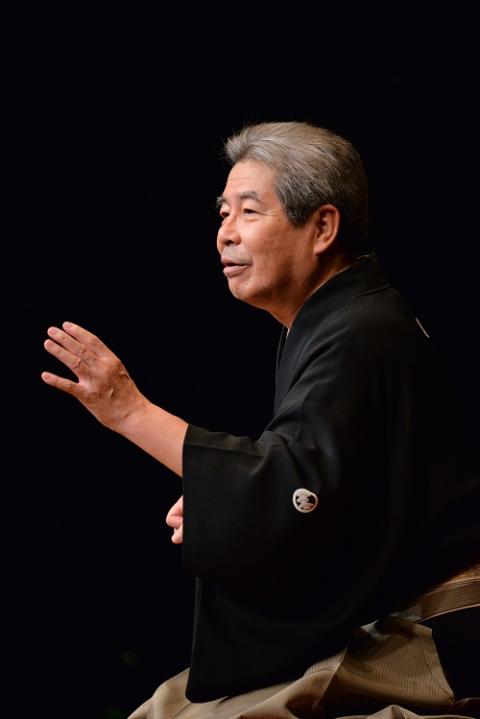
As far as living comical storytellers go, he is the absolute best! His master was Tatekawa Danshi, who had a reputation and buzz that set him apart from other modern comical storytellers. Tickets were sold out immediately for performances by Shinosuke, who was the 9th disciple of such a man. He excelled in both classic Edo rakugo and modern creative rakugo, and his ghost stories in particular are superb. His unique wrinkled voice creates a frightening atmosphere, and the way he builds up to the climax is breathtaking.
Recommended performance: “Peony Lantern”
Modern Rakugo
Rakugo, an art form that originated in Japan in the 17th century and continues to be loved by its clients.Even today, its popularity shows no sign of waning.Recently, an anime titled “Showa Genroku Rakugo Shinju” (Showa Genroku Rakugo Shinju) was broadcast on TV and became a popular program.

The story is about a young former hoodlum who, unable to forget the rakugo he heard at a prison visit, makes his debut as a rakugo performer after his release from prison.
The culture of yose (theaters where rakugo, kodan, and other forms of entertainment are performed) is also alive and well. There are three major yose theaters in Tokyo, each of which is open on weekdays and holidays.
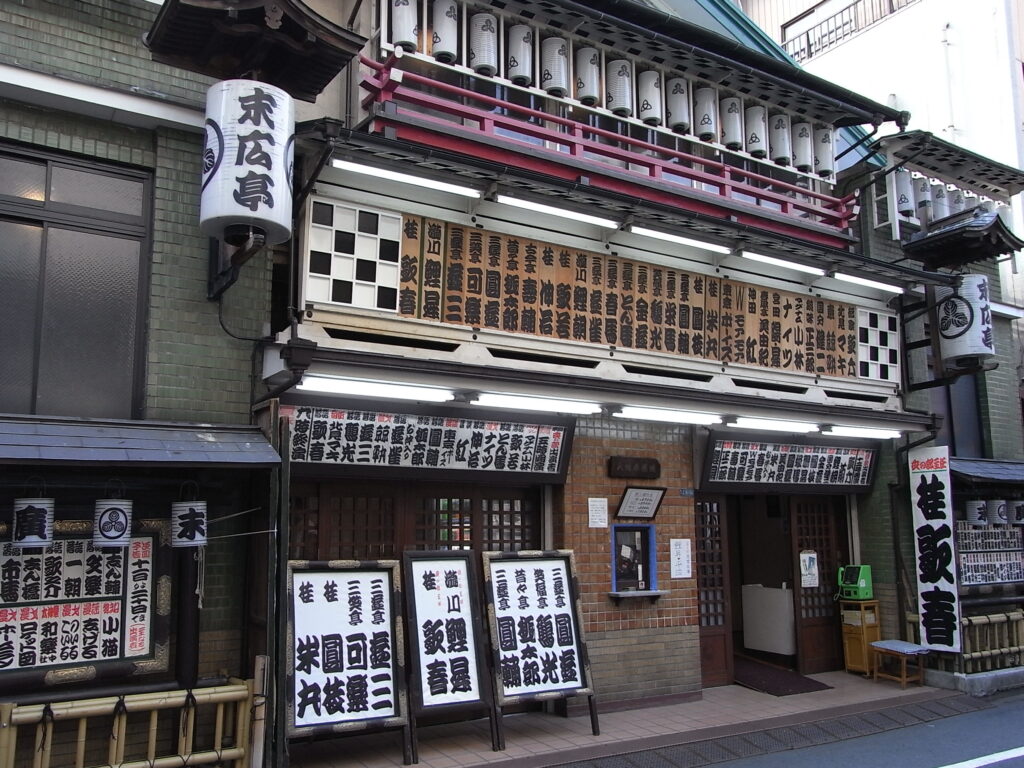
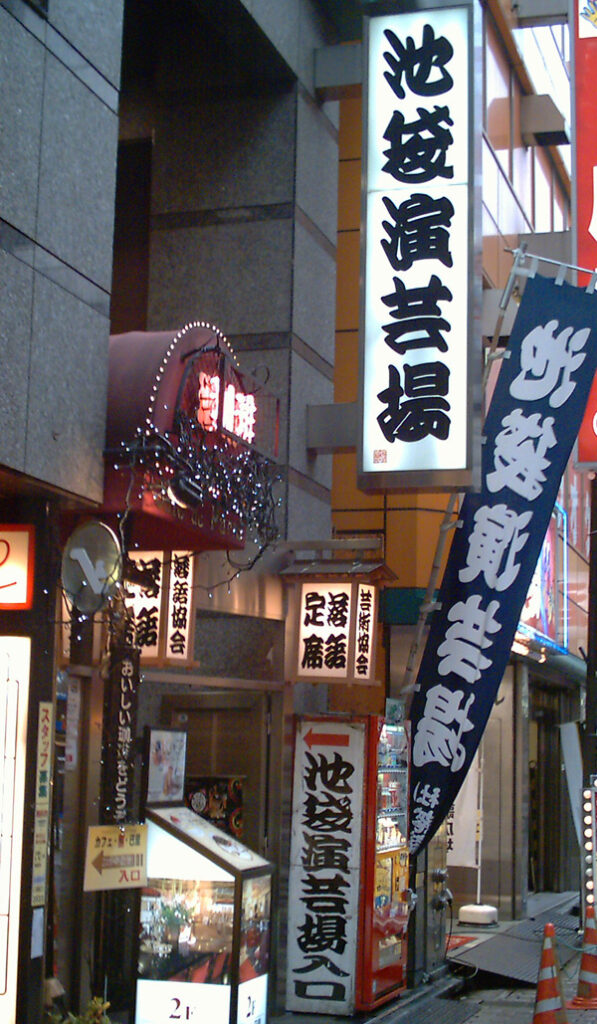
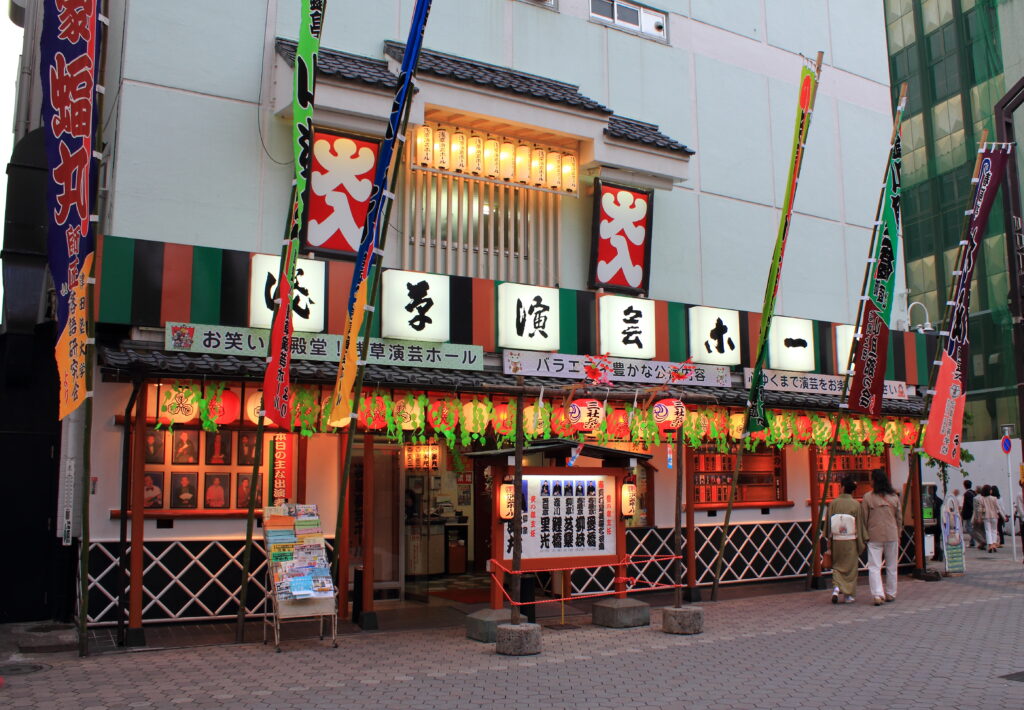
Yose tickets are much cheaper than those for other classical performing arts such as Kabuki and Noh. In addition, they are basically open from noon to night, and once you enter, you can stay until the end of the performance. When a popular rakugo storyteller performs, it is common to see people standing in line to see the performance.
Finally.
Rakugo is a traditional Japanese art form that has been handed down since ancient times.
By providing funny stories, rakugo brings smiles to people’s faces and adds color to their daily lives. On the other hand, when we look back on the history of rakugo, we find that it also served to heal the wounds of the common people through its function of satire. Rakugo, with its abundance of love and kindness, will continue to be a friend of the common people for a long time to come. As a rakugo lover myself, I will continue to visit yose on a frequent basis.
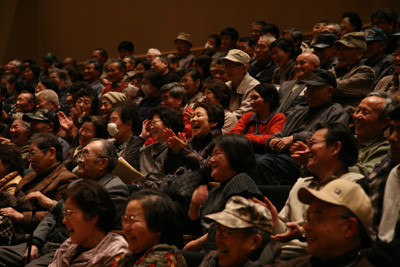
Source
Rakugo Wikipedia
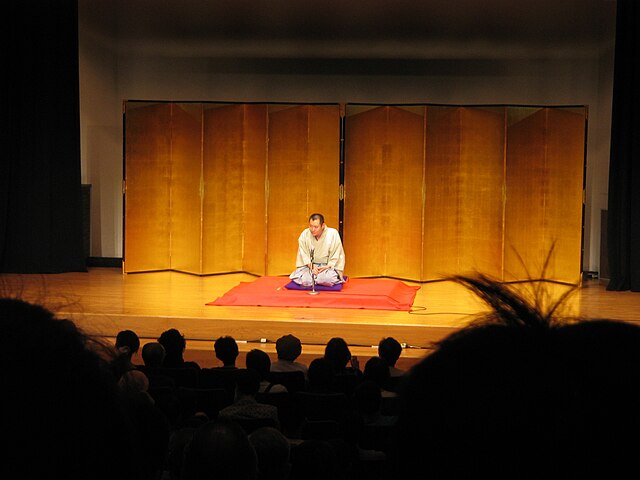
Shinjuku Suehiro-tei
Ikebukuro Engeijo
Asakusa Engei Hall

